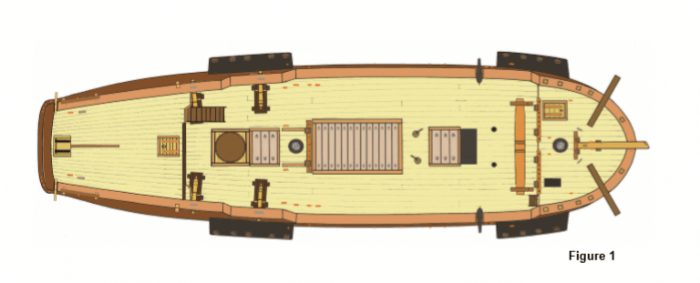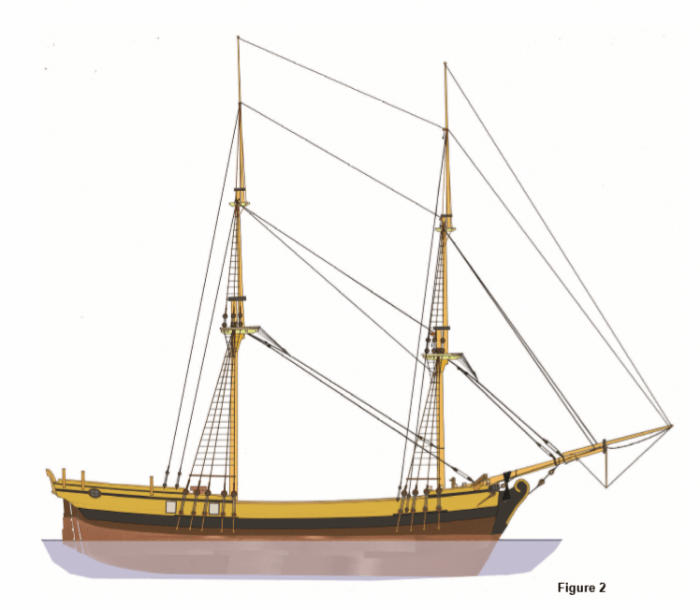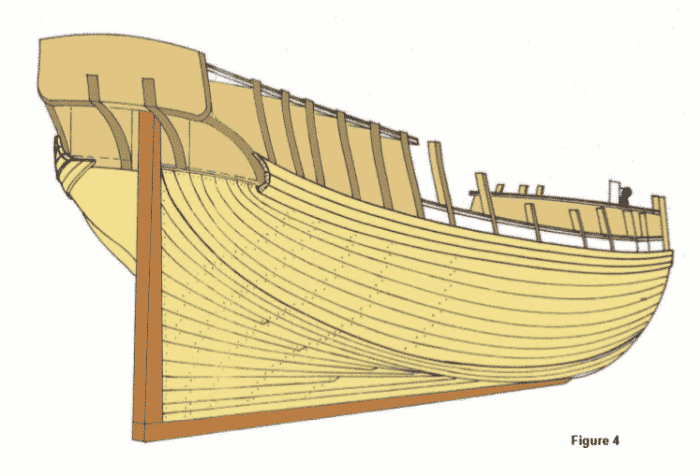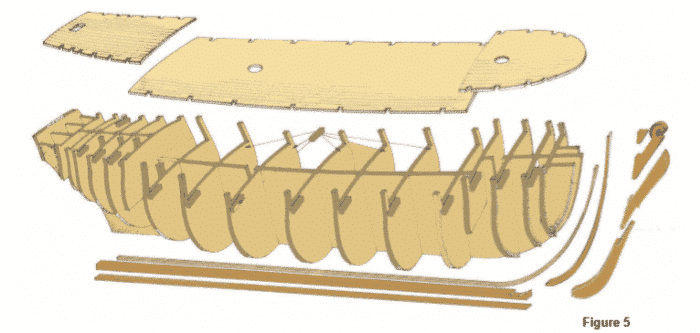How to Understand Your Model Ship Plans & Scale
- Updated on:
- Written by Gary Renshaw
Learn How To Understand Your Model Ship Plans & Scale. All the Different Plan View Perspectives are Explained Ensuring You Are Confident in Building Your Model Ship Kit.
The set of plans provided in your kit will include all the drawings you will need to build the model. The plans will include drawings of the hull assembly, deck layout, rigging plans and belaying plan.
The full set of plans will include geometrical, perspective, exploded views and three-dimensional drawings. All are used to show how the parts, fittings and timber come together to make the complete model. Rigging plans will show the type & size of rigging cord to be used and the start and finish points for the cord.
Each kit manufacturer has their own way of presenting their drawings. You will need to carefully examine the drawings in conjunction with the written instructions to be able to fully interpret the drawings.
There are some features of a model that are presented on a drawing that is not written in the instructions—this is why reading & interpreting the drawings is so important.
Unlike the written instructions which are presented in a number of languages, the written descriptions on the plans are usually presented in the language of the kit manufacturer. This can be a problem for the modeller starting out. However, carefully examining the plans and spending time cross-referencing the drawings to the written instructions will usually result in the drawing being understood— this is interpreting the plans.
The plans & drawings in a kit follow the typical technical or engineering drawing approach. This means they will have a Plan, Elevation, Section, Perspective and Exploded views.
Plan View
The plan presents the model when viewed from above.
The drawing Figure 1 below shows a plan view of the deck and the layout of the deck furniture.
If this drawing was presented as a 1:1 scale for the model direct measurements could be taken from this drawing for the placement of features and deck furniture on the model.

Elevation View
The elevation presents the model when viewed from the side—either the right-side, left side or either or both ends. Thus you can have a side elevation and an end elevation drawing. To show extra detail where required there could be a right-side elevation, left-side elevation, front-end elevation and back-end elevation.
The drawing Figure 2 below shows the side elevation of the model along with the standing rigging.

Section View
A section presents a view of the interior of the model at a particular plane through the model. Sectional views provide an easy way to depict interior features that otherwise would be very complicated to present on a plan and elevation drawings.
The drawing Figure 3 below shows the sectional view of the keel and bulkhead frames of the model.

Perspective View
Some drawings will show an object in perspective. When the human eye looks at a scene, objects in the distance appear smaller than the objects closer to the viewer—drawings that depict the object like this are known as perspective drawings. Perspective drawings provide additional realism to the object being viewed.
The drawing Figure 4 below shows the perspective view of the hull.

Exploded View
An exploded view is a drawing that shows the relationship or order of assembly of various parts of the model. Each part is shown slightly separated by distance in the surrounding space in the case of a three-dimensional exploded view.
The drawing Figure 5 below shows the exploded view of the hull, bulkhead frames, decks, stem post and false keel.

Scale
The concept of scale is important to grasp as all the models you will build will be at a particular scale. Scale can be thought of as the relationship between the actual length you are measuring on a real ship and the way that length is represented numerically or visually on a plan.
A scale model ship is a physical model that represents a ship that is larger. The scale model seeks to maintain the relative proportions of the original ship. Very often the scale model is used as a guide to making the object in full size. The relative proportions of the scale model to the original is called the scale ratio.
Model ship kits are designed at a specific scale ratio to the full-size ship. There are standard Imperial measurement scales and standard metric measurement scales.
The scale 1:48 means 48 feet on the real ship would be equal to 1 foot on a model. This scale came about from 1/4 inch equals one foot. There are 4 quarters of an inch in one inch and there are 12 inches in a foot. It follows then 4×12 = 48.
For model shipbuilding, the standard Imperial measurement scales are; 1:12, 1:24, 1:48, 1:240 and 1:360. For model shipbuilding the standard Metric measurement scales are: 1:5, 1:10, 1:20, 1:50, 1:100, 1:200, 1:500
A scale expressed as a ratio—1:50 means that 1cm on the model ship represents 50cm on the full-size ship.
While the above is the standard scales there are other Imperial scales used such as 1:36, 1:76, and 1:96 and other Metric scales used such as 1:60 and 1:75.
A model with an Imperial scale of 1:96 or a Metric scale of 1:100 will be very close to being the same size. The same can be said for an Imperial scale of 1:48 and a metric scale of 1:50.
In terms of detail a model with a scale of 1:12 will have significantly more detail than can be shown on a model with a scale of, say 1:96.
When reviewing the drawings in your kit take particular note of the scale. Plan and side elevation drawings may be at a scale of 1:1—this means the drawing presented is on the same scale as the model. From 1:1 scale drawings, direct measurements can be taken from the drawing and applied to the model.
Where drawings are not drawn to a scale there should be a statement saying “Not to Scale” on the plan sheet. Some drawings found in a kit may not have this statement and you will be left to deduct this yourself.
Examples
A few examples are presented below: Using Imperial measurements The height of a hatchway on the real ship is 6 feet. For a model built to a scale of 1:48, what would be the height of the hatchway on the model?
6 foot equals 6×12 inches = 72 inches.
To convert to the scale divide 72 by 48 = 72/48 =1.5 inches. Answer: 1.5 inches
Using metric measurements: The beam of a real ship is 8 metres. For a model built to a scale of 1:50, what would be the beam of the model?
8 metres = 800cm = 8000mm
To convert the scale divide 800cm by 50 = 800/50 = 16cm or 160mm. Answer: 16cm or 160mm
Summary
Understanding and interpreting plans and drawings is one of the most important aspects of model ship building. Being able to conceptualise and interpret the drawings will make building your model so much easier and enjoyable.
If you strike a problem or the written instructions are not well explained—don’t throw your hands up in disgust—just sit back, take your time and ponder the issue—review the drawings and plans and kit parts — mull over the problem—reflect on it and in the great majority of cases the answer will become apparent to you.
Key Takeaways
- Understanding model ship plans and scales is crucial for accurate building, encompassing various views like plan, elevation, and section.
- Scale ratios, varying from imperial to metric, dictate the model size relative to the original ship, influencing the level of detail.
- Mastering plan interpretation enhances the building process, combining geometrical, perspective, and exploded views for a comprehensive understanding.

Learn The Art Of Building A Model Ship
Get started in wooden model ship building today









